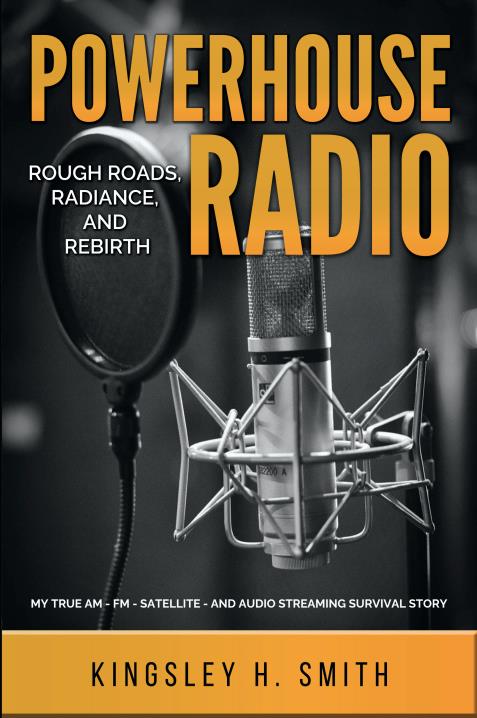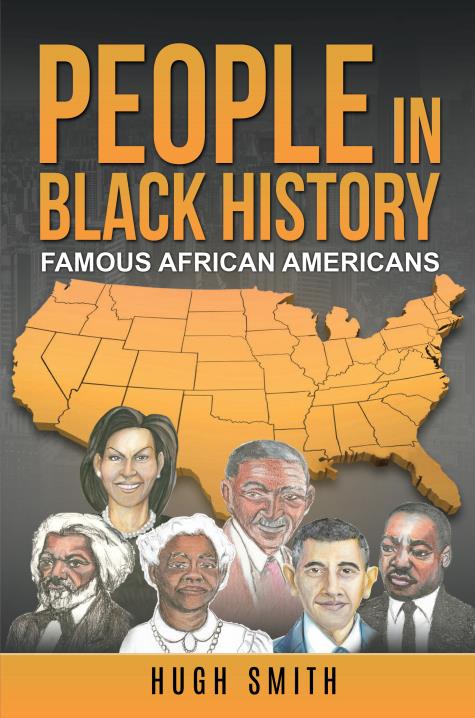Categories
-
0 Musical Headliners Keep The MLK Dream Alive
- Flashback
- by Kingsley H. Smith
- 01/15/2026
January 15 is Dr. Martin Luther King Jr.'s birthday. It is observed as a USA national holiday on the 3rd Monday of the month. In 1973, six top music artists, along with comedian Flip Wilson, packed the Omni arena in Atlanta, Georgia rallying around the concert theme Keep The Dream Alive. The show was for the benefit of the Martin Luther King Jr. Center for Social Change. King's widow Coretta Scott King provided the message. The Jimmy Castor Bunch, Jose Feliciano, The Friends of Distinction, Linda Hopkins, The Main Ingredient and Wilson Pickett provided the music. The concert was recorded by RCA Records as a double vinyl album. Let's Keep The Dream Alive and support the King Day of Service as a national holiday! The Videos First, a fresh 2026 video that's 59 seconds. The second full-length video was done in 2009! It's still valuable. You'll see how video production styles have changed. Video 2 does feature the music. Enjoy them both! The third version (for 2026) was cut down to 2:59 minutes for BlueSky, then expanded slightly to 3:09 for YouTube. Bonus From 2024, this 59 second bonus video, I produced for another website, tells the King Day story. Previous Post
-
0 Picture Sleeve Pop Snapshots
- Photo
- by Kingsley H. Smith
- 01/12/2026
Charles Szabla, in his 1998 book Goldmine 45 RPM Picture Sleeve Price Guide, detailed for record collectors "It's not just your vinyl that has value - picture sleeves are also in demand." The original title for this story spelled 'Snapshots' with a dollar sign: $napshots. For technical reasons, I had to change it. Why are these nostalgic 7 inch by 7 inch sleeves worth more than the vinyl records they protected? It's probably because of our never ending fascination with cultural artifacts, (nostalgia)! Take a photo of a performer, have a graphic artist tweak the visual scene, and a picture sleeve portrait is created to enhance the emotional music buying experience. Where can you get Picture Sleeves today? Grab them from record stores (with a purchase of course), if you can find a record store. Most of my almost 200 picture sleeves were included with purchased 45 RPM vinyl records. Some are promotional records supplied by record companies during my radio broadcasting days. The collection grew by accident. I just thought they were cool and worth saving! A handful of 5 or so were obtained from yard sales or community marts. I'm always looking for more! See the three examples below. Here is the 1998 monetary value VG (very good condition) and NM (near mint condition) as compiled by author Charles Szabla. The Beatles "I Want To Hold Your Hand" / "I Saw Her Standing There" VG $15.00, NM, $25. A special NYC radio version with 6 WMCA Good Guy DJs on the back cover is VG $375, NM, $1500. 1964. James Brown "Hey America" VG $3.75, NM, $15.00, 1970. The Yardbirds "Happenings Ten Years Time Ago" VG $6.25, NM $25, 1966. They don't make them anymore Why are some covers valued more than others? A lot of it has to do with the legacy of the artist. You might think the older the artists' era, the better. Any picture sleeve from Brook Benton or Marvin Gaye or Frank Sinatra, for some reason, is valued much higher than a James Brown sleeve. David Bowie's "Time" backed with "The Prettiest Star" sleeve from 1973 is valued in Szabla's book VG $150, NM $600. Visit my online collection at PictureSleevePop.com. You will see these three picture sleeves below, and more. Check out my earlier story Picture Sleeve Pop Features 45 RPM Record Memorabilia. Our Picture Sleeves Previous Post | Next Post
-
0 A Radio Era That Played Musical Hits
- Commentary
- by Kingsley H. Smith
- 12/29/2025
Before online streaming, podcasting, or YouTube videos, radio ruled as the free, or least expensive entertainment portal. Today, radio still survives. Competition grows. Television expands. TV lives on despite the cord cutters. However, modern technical innovation hasn't eliminated the oldest person in the group, our friendly super centenarian known as radio. Despite this, bypassing legacy distribution systems is easy for song discovery in the 21st century. Musical performers can go directly to their fan base by offering free songs for download from their own website real estate. Bands and solo acts use social media to spread the word. Let's look back at a time when radio actively promoted music by capturing audiences, identifying the songs played, and by connecting listeners and performers with their community. Hearing is believing I have lots of topic authority on this subject thanks to my many decades working in the industry as an announcer, music host, music director, production director, program director, and network broadcast executive. Radio airchecks are telescoped recordings of a specific program with the focus on talk segments. My archive includes my own airchecks on all the audio media formats. Technology leaped forward, so did I. These airchecks are on reel-to-reel, cassettes, DAT (digital audio tape), and digital broadcast automation systems (captured by download to MP3 or WAV files). In the broadcast studio, turn on your microphone, the recording begins. Turn off your microphone, the recording automatically stops. That's an aircheck. It's a record of everything happening while you talk live. I recorded virtually every show I did, and listened back to everyone I recorded. That was my recipe for growth and improvement. Yes, my supervisor would sometimes listen back with me to offer comments. Here are three airchecks from the 1980s featuring a few, but not all of the radio stops that I made in Philadelphia, PA. In order, spanning four years, you'll hear WIFI 92, WSNI 104.5, and WZGO Z106. All clips are brand new digitized segments never before featured. The audio cassette fix is real. You can find the complete version in the much longer WIFI 92 aircheck posted in the website aircheck section. For the original version, I had to fix the split tape for the cassette to play! Get nostalgic, and soak in a small part of my experiences that contributed to my Powerhouse Radio Book. It is the 2025 Readers' Favorite gold award winner for the best non-fiction - Music/Entertainment book. You can listen to the audiobook which I read, or get the paperback or eBook. This is a memoir you will love. The slice of history radio aircheck video is short. 3 minutes. Enjoy! Previous Post | Next Post
-
- Christmas
- by Kingsley H. Smith
- 12/23/2025
I'm sure that the love of Christmas music is a personal choice for you. We all have our favorite artists, songs, and styles. But sometimes, we just want to treasure the festive joy of the season. My tastes run from traditional to contemporary. I have Christmas mixes featuring all instrumentals, mostly ballads, primarily old-school, you name it! Every year, I add new songs. Our Christmas Music - Holiday Songs list does not include some of the recent adds, but you should still check it out. You'll see what we played exclusively on the non-commercial Live365 Powerhouse Radio online stream during the 12 days of Christmas in years past. We don't do the stream anymore. Christmas Party Music For 2025, I decided to digitize an all-new Hip Hoppin' Christmas playlist. It's one hour, sixteen minute long. I'll always balance things out, so I do slip in a few traditional tracks. Here it is in order. The mixed master MP3 was produced in radio style. "Nutmeg" - John Legend "Me & Mrs. Claus" - Bob Rivers ("A.T." Tunson on vocal) "Cooler Than Santa Claus" - Morris Day "N Yo City" - Bootsy Collins "Rudolph The Red Nosed Reindeer" - DMX (tempo separator) - Mariah Carey holiday greeting "O Holy Night" - Mariah Carey "World Christmas" - R. Kelly "Do You Hear What I Hear" - Destiny's Child "Wonderful Christmastime" - Kelly Rowland "Joy to The World" - Earth, Wind & Fire "O Come All Ye Faithful" - The Gospel Christmas Project "Christmas in Hollis" - Run-DMC (tempo separator) - En Vogue holiday greeting "Have Yourself A Merry Little Christmas" - En Vogue "I Saw Mommy Kissing Santa Claus" - En Vogue "Home for The Holidays" - Kool & The Gang "Winter Wonderland" - Kool & The Gang "Christmas Rappin'" - Kurtis Blow "Here Comes Santa Claus" - Rupaul "Hang Up Your Stocking" - Chipmunks "Chipmunks Song" - The Clark Sisters (tempo separator) - generic holiday greeting "Let It Snow" - Oleta Adams "Feliz Navidad" (live version) - Celine Dion "Nutcracker" - Berlin Philharmonic (hip hop remix) Seasons greetings, Happy Holidays and Merry Christmas to you. If you like my ugly sweatshirt, discover more info at our sister website in the Quikthinking Software Shop! This sweatshirt is only available during the Christmas season. In January, it's gone. Previous Post | Next Post
-
0 Morris Day: Cooler Than Santa Claus
- Christmas
- by Kingsley H. Smith
- 12/18/2025
So a few years back, Morris Day said he was coming for Mariah Carey's #1 spot when "Cooler Than Santa Claus" was dropped into the marketplace. What's great about Christmas for music artists? Every year, they get another chance to find new listener-fans for their traditional or contemporary holiday songs. Who Is Morris Day? Morris, with The Time (Jesse Johnson, Jimmy "Jam" Harris, Monte Moir, Terry Lewis, Jellybean Johnson, and later Paul Peterson had plenty of hits. Jerome Benton was eventually added to the crew. Prince and his estate once restricted use of the group name "The Time" after he passed. Prince owned the name. This appears to have been rectified. In 2019, sitting in perfect seats, I had a chance to see Morris Day with Sheila E. See the second video below that I shot during their show. Since Christmas is not really about Santa and presents, I'm including something traditional by Aretha Franklin. Aretha signed her CD "This Christmas" for me at Borders Books and Music in Washington, DC (2008). You'll see an unsigned version. Here's a quick audio segment of "Cooler Than Santa Claus." Your browser does not support the audio element. Now, watch the official "Cooler Than Santa Claus" video. Dance, and smile your way through the holiday season! In Atlantic City, NJ A Traditional from Aretha Listen to a touch of "Ave Maria" by Aretha Franklin. Your browser does not support the audio element. Discover my review of the Best-Loved Songs of Christmas. One author profiled 31 of them. They are classics. You know them all. I analyze. Have a wonderful holiday season! Bonus. Enjoy this 5 minute Christmas Cover-art delight I did with music. Previous Post | Next Post
-
- Flashback
- by Kingsley H. Smith
- 12/15/2025
2025. A 50 year reunion, new history, and a new paperback and revised eBook from me. People In Black History: Famous African Americans joins Powerhouse Radio: Rough Roads, Radiance, and Rebirth; My True AM - FM - Satellite - and Audio Streaming Survival Story. In The Year 2025 Zager & Evans had a hit song in 1969, "In the Year 2525." That future is a long way off. This siren song of doom starts slowly with a sad spoken warning, until a mid tempo melody kicks in. That gets things rollin.' The song was ranked #2 for the whole year, behind The 5th Dimension's "Aquarius/Let The Sunshine In." Denny Zager and Richard Evans were folk - rock guys. Their big claim to fame? Capturing lightning in a bottle as masterful one hit wonders, arriving and departing the scene faster than the coming gloom their song predicted. Enough musicology. Watch my In The Year 2025. It relates to what I've done with music, comedy, and mobile app development. Twelve months of throwback fun is guaranteed in 59 seconds! Podcasters, pay attention to how the audio is mixed. Previous Post | Next Post
-
0 Musical Voices Making Radio and Song History
- Flashback
- by Kingsley H. Smith
- 12/08/2025
Why are these 3 stories your most popular favorites from 2025? Maybe it's because of my personal connection with the individuals. Perhaps it's the way the history narrative is told. Possibly, it's the entertainment value of the audio sound. I'll let you decide. If you missed them, or haven't checked them out, don't pass up these 3. Number 3 How did my family member get involved with a member of The Sequence? It may not be in the way that you suspect! Check out Angie B, Blondy and Cheryl The Pearl. Number 2 You can have nothing but respect for a trailblazer who created the original blueprint for Black radio announcer success. Within this story, there's a wonderful audio tribute as an added bonus. Read all about what this icon achieved. Listen to his story too in The House That Jack Built - Hal Jackson. Number 1 Here is an aspect of USA radio that doesn't exist anymore. On-air personalities who mimic music artists by recording their own "tunes." Their "tune" might be just spoken word. Podcasts have probably replaced this time honored element of DJ showbiz. Capture the history of an era, and jump right into 10 Radio DJs Who Dropped Hot Wax Like Rock Stars. Previous Post | Next Post
-
0 Radio Roots and Website Masks
- Website
- by Kingsley H. Smith
- 12/01/2025
To authentically present my career story, a trust worthy online presence is necessary. My personal website mentioned below has now gone through two major phases as the online portal to tell my real American story: Designed and launched in 2021 to look good on mobile and laptop Redesigned again in December, 2025 (this time using a mobile first architecture) Mobile first simply means that the responsive mobile design is done first, followed by the laptop and desktop versions. I was lucky to have these real mobile devices to assist in the development: iPhone 14 iPad 7th generation tablet Kindle Fire HD Plus tablet (Android) A generic Android tablet Samsung Galaxy phone (Android) Motorola phone (Android) Does Size Matter? All of these devices were a tremendous help. Believe me, website design is not one size fits all! Most accommodating was the iPhone. It adjusted the easiest to the nearly one hundred or more tweaks throughout my webpage design process. The look of a website's design should be an absolute sketch. What really happens? Each web browser interprets the web page code by adding an interpretive "mask" (in a figurative sense) over the browsers' proprietary layout. You know these browsers as Safari, Silk, Chrome, Firefox, DuckDuckGo, etc. What you want to see may not be what you get. Today, big screen-size is not necessarily better because a major percentage of online viewing is done on a mobile device. A special section of the webhost we use was created to test, test, test before launching. This website storyboard continues with never ending tweaks. If you missed the mid-year 2025 Powerhouseradio.com blog posts about my Black Authors TV interview, my Powerhouse Radio story is a must watch 5 part series on YouTube. Go to KingsleyHSmith.com, (a new window will open), and select the 'About' page. At the bottom of the 'About' page, touch the picture of me with the two interviewers. You'll go to the YouTube playlist. Watch the 5 part series, and more! Previous Post | Next Post
-
0 Shawnee's Marching Band Fall Craft Fair and the WURD Radio Empowerment Experience
- Community Events
- by Kingsley H. Smith
- 11/13/2025
The holidays are coming. Join me, if you are in Southern New Jersey, or in Philly, for these two popular neighborhood events. Look for me, and I'll have a brand new surprise for you! Support the Shawnee Marching Band's Fall Craft Show on Saturday, November 22 in Medford, NJ. On Saturday, December 13, all of the attention shines on the WURD Radio Empowerment Experience in Philadelphia. Get ready for a fantastic holiday marketplace celebrating Black entrepreneurship, creativity, and community growth. Yes, the surprise is my brand new paperback book, with a deep focus on USA history. The official launch date is January 9, 2026, so retailers can't offer it until then. The good news is I have copies now, so you'll be able to enjoy this exclusive item available for you, or for gift giving, at both of the community focused events highlighted above! See you there, and stay tuned for more. Previous Post | Next Post
-
0 Johnny Mathis, Whitney Houston, and The Sequence
- Flashback
- by Kingsley H. Smith
- 10/22/2025
Before the 1960s influences of Motown, The Beatles, and The Beach Boys, the style of popular music was different. In the 1950s, Chuck Berry, Little Richard, and Bo Diddley created and revolutionized the sound that would be called rock and roll. During this decade, traditional songs in the style of Frank Sinatra and Tony Bennett soldiered on for popularity, radio airplay, and record sales. One iconic balladeer who is still with us, as of this writing, is Johnny Mathis. Mathis was a champion of the "standards" music genre. Standards use lots of strings, horns, and up-front vocals showcasing easily heard, understandable lyrics. I've played two Mathis songs on the radio in the 1970s and 1980s. 1978's "Too Much, Too Little, Too Late," a duet with Deniece Williams was the first. 1982's "Friends in Love," a duet with Dionne Warwick was the second. Johnny Mathis had his biggest solo hit in 1957. "Chances Are" was a #1 pop song, and a #12 R&B song! Although it is not R&B, it is a great song. "Chances Are" was a 1998 Grammy Hall of Fame winner. Here are a few other Johnny Mathis pop hits: "It's Not For Me To Say," 1957 "The Twelfth of Never," 1957 "Wonderful! Wonderful!," 1957 "Wild is the Wind," 1957 "A Certain Smile," 1958 "All The Time," 1958 "Teacher, Teacher," 1958 "No Love (But Your Love)," 1958 "Come To Me," 1958 "Sweet Thursday," 1962 There are many more in the 1960s, but these ten are great examples of his success and popularity. "I Only Have Eyes For You" is one of my six Johnny Mathis albums, all on Columbia Records. Five are from the 1970s, one is from 1982. I certainly lean toward more of a funkier music groove, but a legend is a legend. Historic music is just that! Recently, this Sequence album came into my possession. Presenting the front and back of their 1983 record for you is a follow-up to my story about group members Angie B, Blondy and Cheryl The Pearl. Their experience with my family member in her house is a snapshot of city life at the dawn of hip hop. Enjoy reading it. I get a lot of emails from Whitney Houston's posthumous promotion machine. Her team provides updates about new remixes, swag, and noteworthy fan events. Keeping her memory alive is a good thing. We all know her hits, but I was very impressed with the new Whitney Houston Gospel album released in 2023. If you are a Whitney lover, discover, one more time my Whitney Houston: I Go To The Rock review. The songs are spiritually uplifting. Check them out. Previous Post | Next Post












